
views
Warming up Correctly
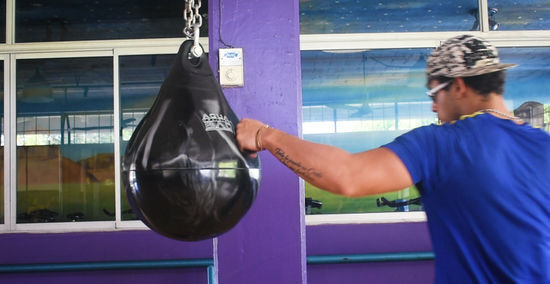
Put in the time. Practice makes perfect with everything, including fighting. If you’re not willing to put in the time to practice, you’ll never get faster. The point of practicing is to do the movement so many times over that you can do it without thought and it becomes automatic. Become an autopilot fighter by having drills to really ground the movement into your mind.
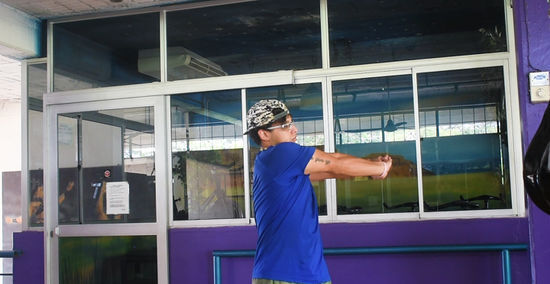
Practice some dynamic stretches. Dynamic stretches are different from static stretches. Static stretches are meant to pull and hold your muscle in place. Dynamic stretches move your muscles and warm them up by getting them working. When you think dynamic stretches, think about jump rope, squats, lunges and jumping jacks. For your arms, try hugging motions and arm rotation. If it feels like you are getting your body up and moving, it is likely a dynamic stretch. Compare your muscles to rubber bands. When it’s cold or your movement is constricted, they are tightly wound. By warming them up, you’re allowing your body to prepare itself for some big-time movement.

Get your head in the game. Visualize the ideal outcome to the fight. Envision how you want to win and imagine each movement in each moment. Are you going to give a knock-out punch? Are you going to throw out 30 punches in a minute? Hype yourself up and get your adrenaline pumping. It’s important to build up your confidence. If you’re nervous, remind yourself that you are going to win and it’s going to be the highlight of your week.
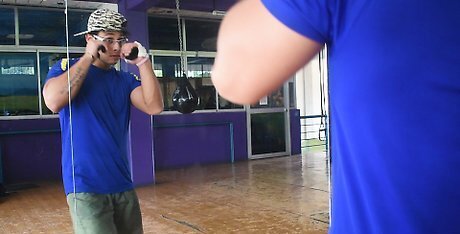
Come prepared to practice. You wouldn’t show up to a job interview wearing slippers and pajamas so don’t practice fighting when you’re not prepared. Putting on your gym shorts and tightly lacing your running shoes will help you get in the mood. It also ensures proper movement when practicing. Make sure you don’t have a heavy meal or an empty stomach before practice, either. Have a healthy light snack beforehand to ensure you can be held over till your post-workout snack. Don’t forget to stay hydrated, either.
Throwing the Best Jab
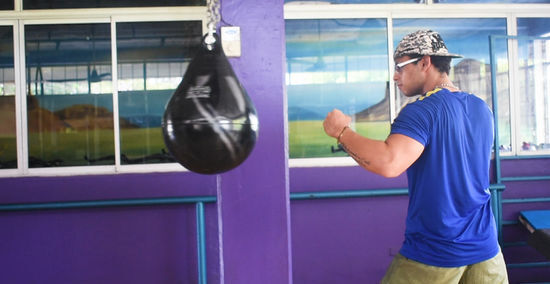
Practice your jab stance. You should be slightly hunched with knees bent, with your elbows inwards toward the body and your fists close to your face. Keep your chin tucked to protect your jaw and stay nimble on your feet. Depending on your dominant hand, keep that side of your body tilted in behind of the rest. For example, if you throw a right-handed punch, the left side of your body should be slightly ahead of the left. Keep your dominant side slightly veered to behind you. Remember when throwing punches to have proper hand form as well. Close your fingers and keep your thumb outside of your fist. Tucking your thumb in can lead to broken digits.
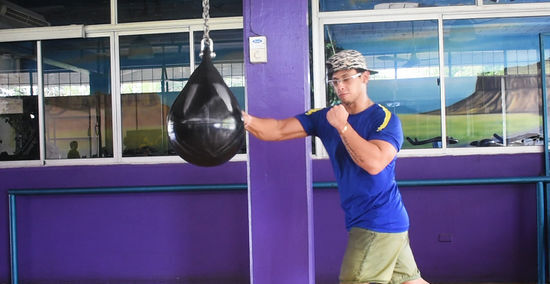
Punch with your entire body. If you only punch with your arm muscles, it will be weak and empty. Instead, use the force and weight in your body to spiral your punch forward. When you throw your jab, twist your body and step forward towards your opponent. This uses the strength in your strongest muscles in your legs to propel your punch forward. After throwing a jab, quickly jump and snap back into your stance to protect yourself from a counter-attack. Extend your arm to its fullest when throwing your jab. This creates a strong, stabbing motion.
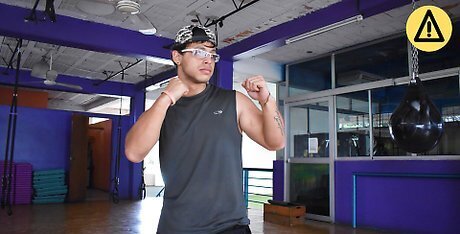
Take a break. Don’t practice punching by throwing punch after punch. Instead, allow your muscles to breathe and relax after a punch. After the tiredness fades, practice again. Letting your muscles take a break will allow every punch to be your best punch. Practicing this way will teach your body only to have the best, complete punches, rather than ineffective and weak throws. Don’t worry about speed at first. It is more important to throw a proper punch. Think of it this way: If you can’t throw a proper punch, it doesn’t matter how fast the poor punch is.
Building Speed Muscles
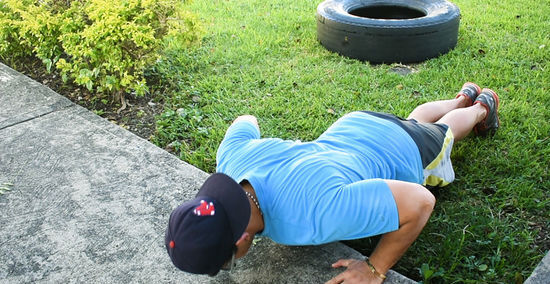
Do 10 quick sets of 10-15 repetitions of extended push-ups. Extended push-ups only go 1/3 of the way a full push up does. This works out your triceps and builds the muscle memory to create a quick punch. Maximize the speed and explosion of your punches by utilizing this exercise.
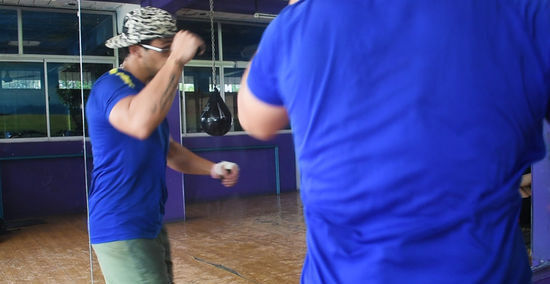
Shadowbox at 100% speed wearing gloves. Shadowbox in front of a mirror to focus on technique and speed. Don't use weights and focus on technique. Time yourself to see how long you can go at full speed. As you build your endurance and your strength and coordination begin to improve, you'll be able to throw more punches at a shorter amount of time.

Use a speed bag and double-end speed bag. This boxing equipment is true to its name. While it not only increases the speed of your punches, it will also help you focus on your accuracy, timing, and coordination. When you punch a speed bag it immediately bounces back at you, forcing you to punch again. This repetition strengthens your shoulders and arms while creating a fast response time.
Getting the Best Muay Thai Kick

Perfect your form. Like with punches, without the proper form you can’t throw a strong kick. Get in the stance for a Muay Thai kick by putting your left foot in front of the other, and your hands up close to your face similar to the jab stance. This will open your hip and allow you to have a powerful swing. When you’re ready to practice moving, you will lean on your toes of the forward foot and swing your back leg partially forward. Practicing the movement will help make you comfortable with it. When you lean onto your toes, your lead hand will come up to protect your face. Meanwhile, your dominant hand will begin to swing backwards behind your body.
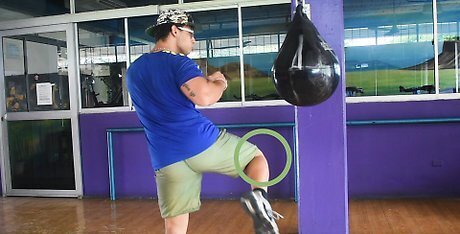
Point your knee at the target. When you move towards your toes and lift your leg towards your opponent, you need to point your dominant knee directly at the target. Think of it like lifting to give off the impression of a false kick. The importance of putting your weight on your toes, not your heels, comes into effect here. By keeping your weight on your toes, you allow the rest of your body to follow through into a full turn.
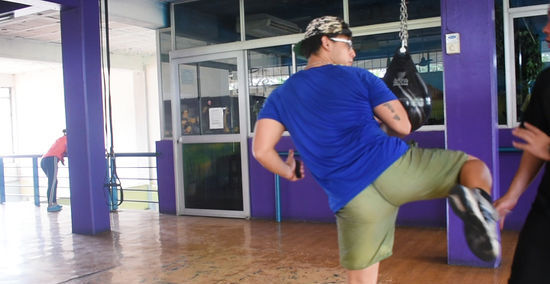
Follow through with a full kick. After you’ve given the knee lift, come back down to the ground. Without losing your momentum, lean forward onto your toes, twist your body, and kick your leg towards your opponent. Remember that you want your shin to have the contact, not your foot. You should apply enough force that your body does a complete 180 spin. Be fast about your kick. A slow kick will leave you open and vulnerable to your enemy. At the end of your 180 spin, lift your lead knee up against your side with your lead hand. This will protect your body from any jabs or returned kicks from your opponent. When done correctly, the Muay Thai kick can be the most devastating fighting move. Keep practicing to develop a sure-way to end the fight.


















Comments
0 comment